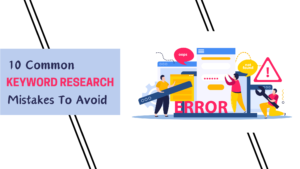Introduction of Brand Identity:
In today’s digital age, where online presence is paramount, effective branding in web design is the cornerstone of success for businesses and individuals alike. Your website is not just a collection of web pages; it’s your virtual storefront, your digital ambassador, and the primary touchpoint for potential customers or visitors. Infusing brand identity into your website is not merely a matter of aesthetics; it’s about creating a cohesive and immersive experience that resonates with your audience, builds trust, and fosters long-term relationships.
Branding in web design goes beyond simply plastering your logo and brand colors onto a webpage. It’s about crafting a narrative, evoking emotions, and communicating your values and unique selling propositions in a visually captivating manner. Every aspect of your website—from the layout and typography to the content and user interface—should reflect your brand’s personality, mission, and vision.
In this comprehensive guide, we’ll delve into the nuances of branding in web design, exploring the strategies, techniques, and best practices to effectively infuse your brand identity into every facet of your website. We’ll discuss the importance of understanding your brand identity, developing cohesive visual branding elements, creating brand-centric content, maintaining a consistent brand voice, optimizing user experience, ensuring mobile responsiveness, and soliciting feedback for continuous improvement.
How to effectively infuse brand identity into your web design:
Infusing brand identity into your website is crucial for creating a memorable and cohesive online presence. Your website serves as a digital storefront, and just like a physical store, it should reflect your brand’s personality, values, and aesthetics. This is a summary of the best ways to incorporate brand identification into your website design:

1. Define Your Brand Identity:
Start by clearly defining your brand identity, including your mission, values, target audience, and unique selling points. This forms the foundation for all branding efforts, including your website.
2. Develop Visual Branding Elements:
- Logo: The most identifiable representation of your company is its logo. Ensure it is prominently displayed on your website, typically in the header or top corner.
- Color Palette: Select a color scheme that appeals to your target market and captures the essence of your brand. Use these colors consistently throughout your website for a cohesive look.
- Typography: Select fonts that complement your brand’s voice and style. Use these fonts consistently for headings, body text, and other elements across your site.
- Imagery: Use high-quality images and graphics that align with your brand identity. Whether it’s photography, illustrations, or icons, ensure they convey the right message and evoke the desired emotions.
3. Craft Brand-centric Content:
- About Page: Use your About page to tell your brand story, including its history, mission, and values. This helps visitors connect with your brand on a deeper level.
- Product Descriptions: Write product descriptions that reflect your brand’s tone and values while highlighting the unique features and benefits of your offerings.
- Blog Posts and Articles: Create content that aligns with your brand’s messaging and provides value to your audience. Whether it’s educational, entertaining, or inspirational, ensure it reflects your brand’s personality.
4. Maintain Consistent Brand Voice:
- Tone and Language: Define a consistent tone of voice that reflects your brand’s personality. Whether it’s friendly and casual or professional and formal, use this tone consistently across all communication channels.
- Messaging: Ensure that your website copy communicates your brand’s values, benefits, and unique selling propositions clearly and effectively.
5. User Experience (UX) Design:
- Navigation: Design an intuitive navigation structure that makes it easy for users to find what they want. To help users navigate your site, use logical categories and clear labeling.
- Layout and Structure: Arrange content in a way that reflects your brand’s priorities and values. Whether it’s a minimalist design or a bold, vibrant layout, ensure it resonates with your brand identity.
- Interactivity: Incorporate interactive elements that engage users while staying true to your brand’s style and personality. This could include animations, hover effects, or interactive forms.
6. Mobile Responsiveness:
Ensure your website is optimized for mobile devices to provide a seamless experience across different screen sizes. Consistency in branding elements and user experience is crucial across all devices.
7. Feedback and Iteration:
Gather feedback from users and stakeholders to continuously improve your website’s design and content. Regularly review and refine your site to ensure it stays aligned with your evolving brand identity and meets the needs of your audience.
By incorporating these strategies, you can effectively infuse your brand identity into your website and create a memorable online experience for your audience.
Conclusion:
Infusing brand identity into your website is not just a matter of aesthetics; it’s a strategic endeavor that can profoundly impact how your audience perceives and interacts with your brand online. By effectively integrating your brand’s personality, values, and visual elements into your web design, you can create a cohesive and memorable online experience that resonates with your target audience and sets you apart from the competition.
By understanding the importance of brand identity and implementing these strategies thoughtfully, you can create a website that not only looks great but also authentically represents your brand, fosters connections, and generates significant interaction from your audience as well as conversions. As you continue to refine and evolve your website, remember to stay true to your brand’s essence while adapting to the ever-changing digital landscape. By prioritizing brand identity in your web design efforts, you can create a powerful online presence that leaves a lasting impression and helps you achieve your business goals in the digital world.











